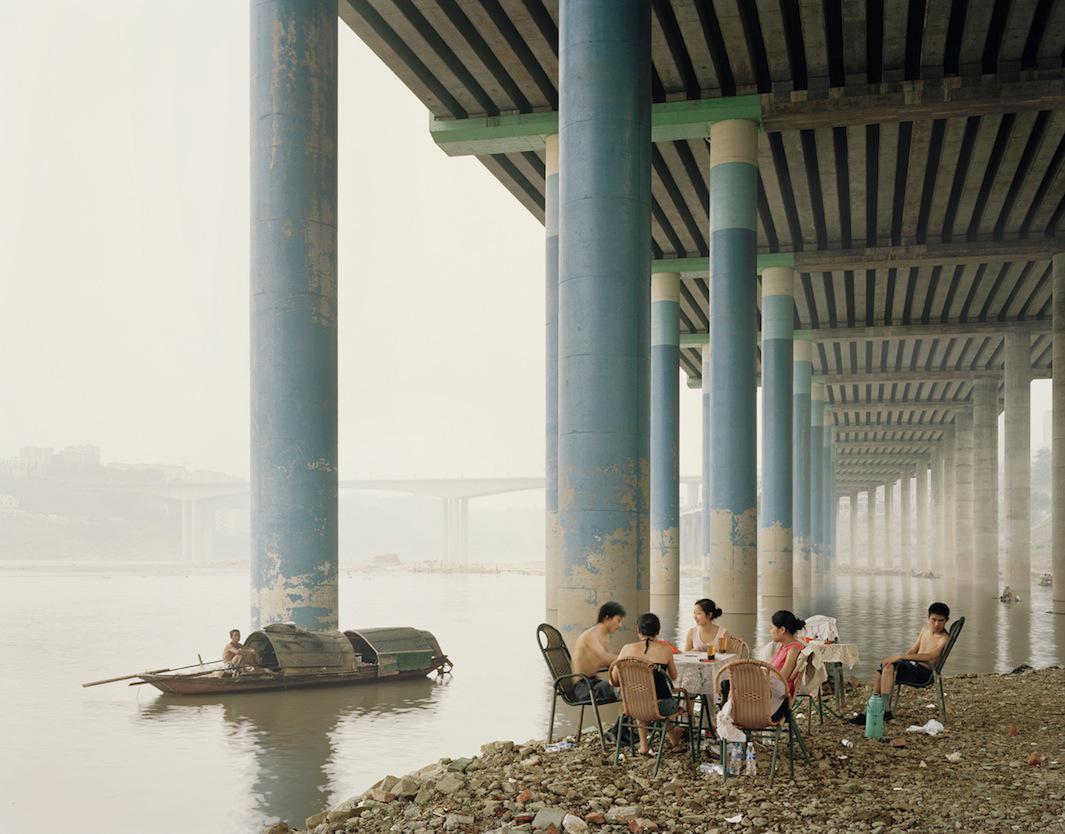At nearly 4,000 miles from mouth to source, China’s Yangtze River is the longest river in Asia and the third longest in the world. Its banks are home to about 400 million people, or around one-third of the country’s population—more than the entire population of the United States. For thousands of years, the Yangtze has played an essential role in China’s culture, economy, and politics, and since 1950, the river and its basin “have been the focus of much of China’s economic modernization.”
In 2006, London-based Nadav Kander came to China with a desire to witness a country “that feels both at the beginning of a new era and at odds with itself,” one that’s growing at “a relentless pace.” He chose to follow the Yangtze not because of an interest in the river, per se, but rather “an interest in confining myself to a pathway through China that had meaning.” Over the next 2½ years, Kander made five trips along the river, traveling for as much as 10 days at a time. He traveled once by boat, but mostly got around by car along with an assistant, a translator, and a driver. His route took him from the river’s mouth by the East China Sea to the Three Gorges Dam (the largest dam in the world) past Chongqing (one of the world’s largest cities), and finally to the river’s source on the Plateau of Tibet.
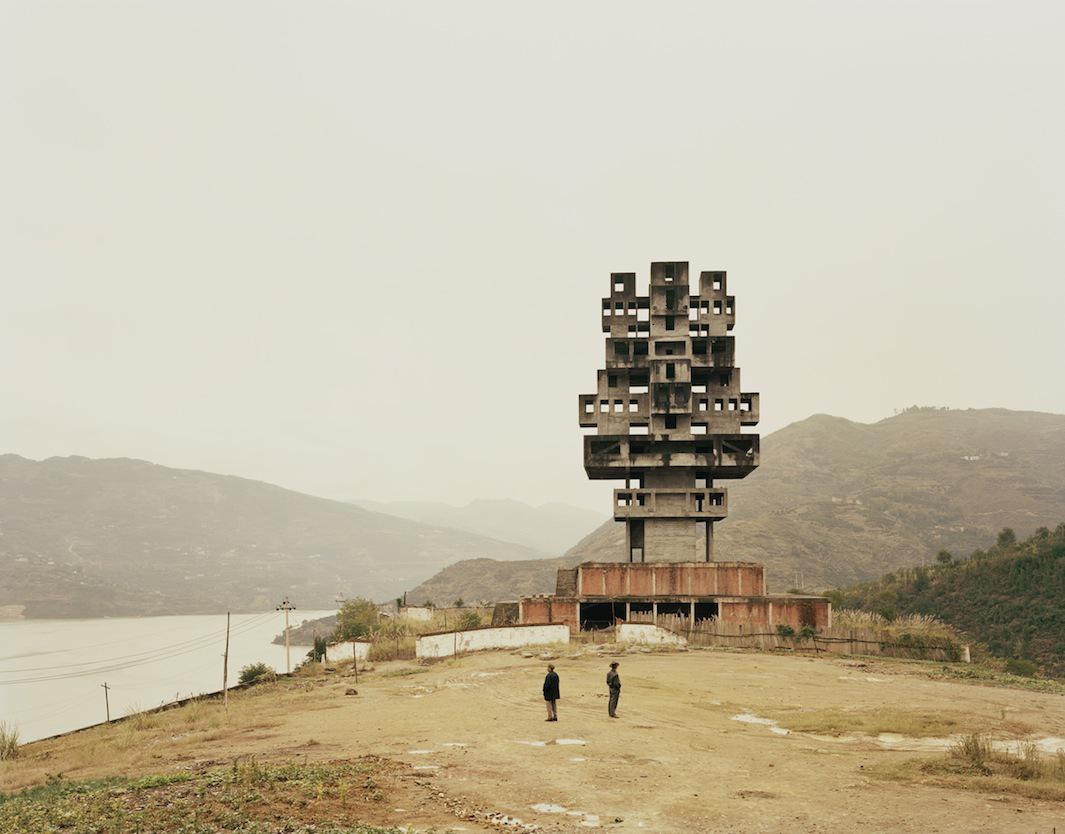
Nadav Kander

Nadav Kander

Nadav Kander
While “Yangtze—The Long River” captures a wide swath of China, Kander’s mode is not documentary style, and his work by no means sets out to record the country with any sort of objectivity. Rather, Kander’s work is sensory and instinctive, an emotional and immediate reaction to his surroundings. “It was very much an immersion. Once I was there. … I got very heightened and closed down and just looked for the pictures to make,” he said in an interview. “I don’t work from a concept and then execute it accordingly. I’d much rather work entirely intuitively and see how the work is informing me and what flow it is taking.”
Kander was fascinated by what he saw, but he often felt like “a complete outsider” in China, and his work started reflecting that, as he increasingly backed away from his subject to take wide shots, the humans within them becoming small dots on the landscape.
The yellowish hue in Kander’s photographs, meanwhile, was not an aesthetic choice—rather, it was the result of “polluted and steamy air” that followed Kander on his journey. While other photographers might have hoped for clear skies, Kander said he liked the uniformity and softness the smog afforded the series, while still allowing for a range of color within the palette. Moreover, he liked how the air quality drew attention to some of the more unpleasant realities of the river: specifically, that it is “the single largest pollutant to the Pacific Ocean,” and the site of wide-scale “demolition and construction.”

Nadav Kander
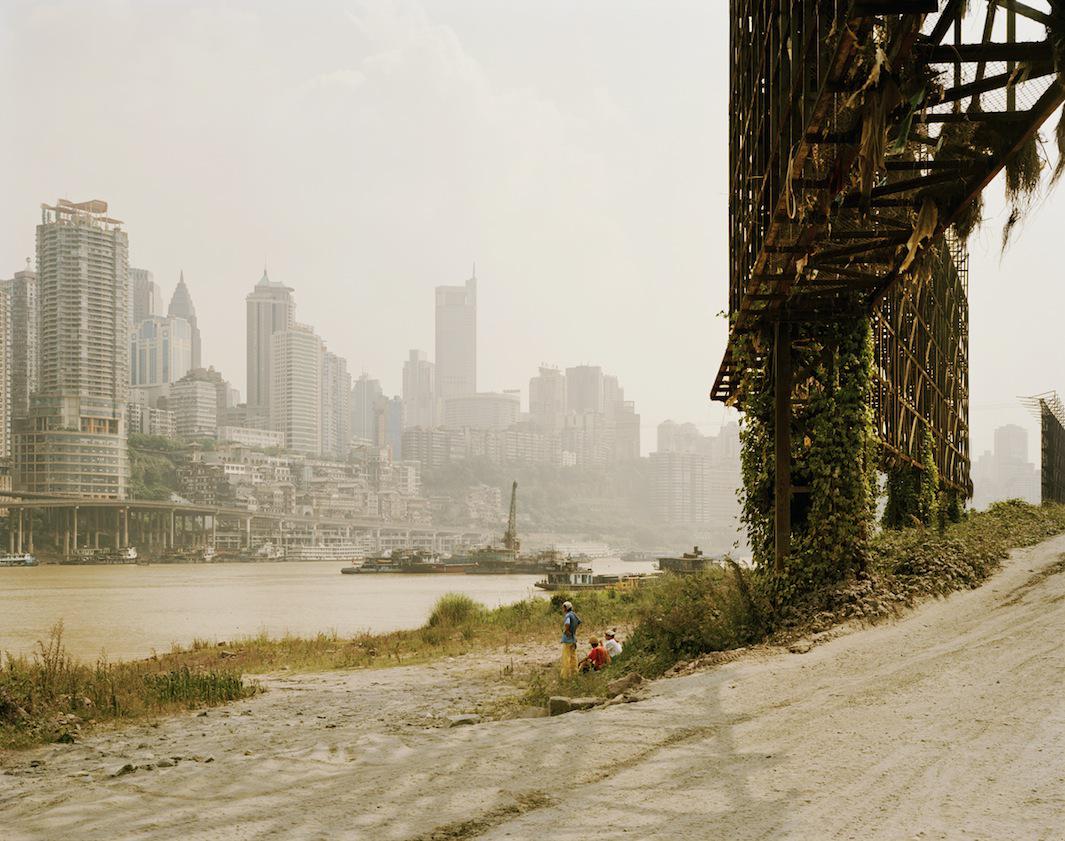
Nadav Kander
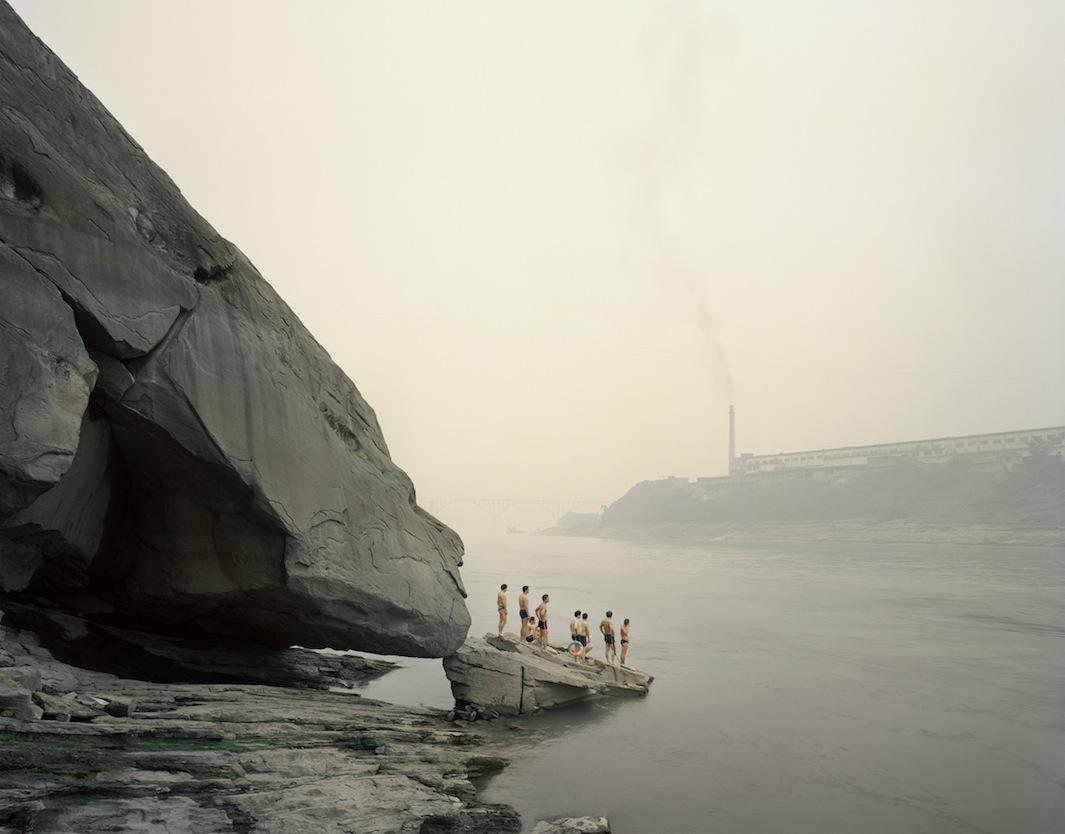
Nadav Kander
“Though the compositions are still and quite beautiful, what you’re looking at is something that might usually disgust you or make you want to avert your eyes,” Kander said. “I seem to reside in this area of making quite beautiful pictures but which have a discomfort to them that asks questions. They’re not just beautiful—I would get very bored of them if they were just beautiful.”
While Kander sees his work as a universal expression of humanity’s relationship with the environment, there’s no question that his series captures a place unique to China, one that holds special significance for its people.
“It’s really in the folklore of the country. It’s in the hearts of the people who live there unlike any other river I know. If you speak to people in Chicago, for instance, about the Mississippi River they wouldn’t really have a connection. But all across China, the Yangtze is very much the mother river of the people,” he said.
Kander’s work is on display at Wisconsin’s Haggerty Museum of Art until Dec. 23.
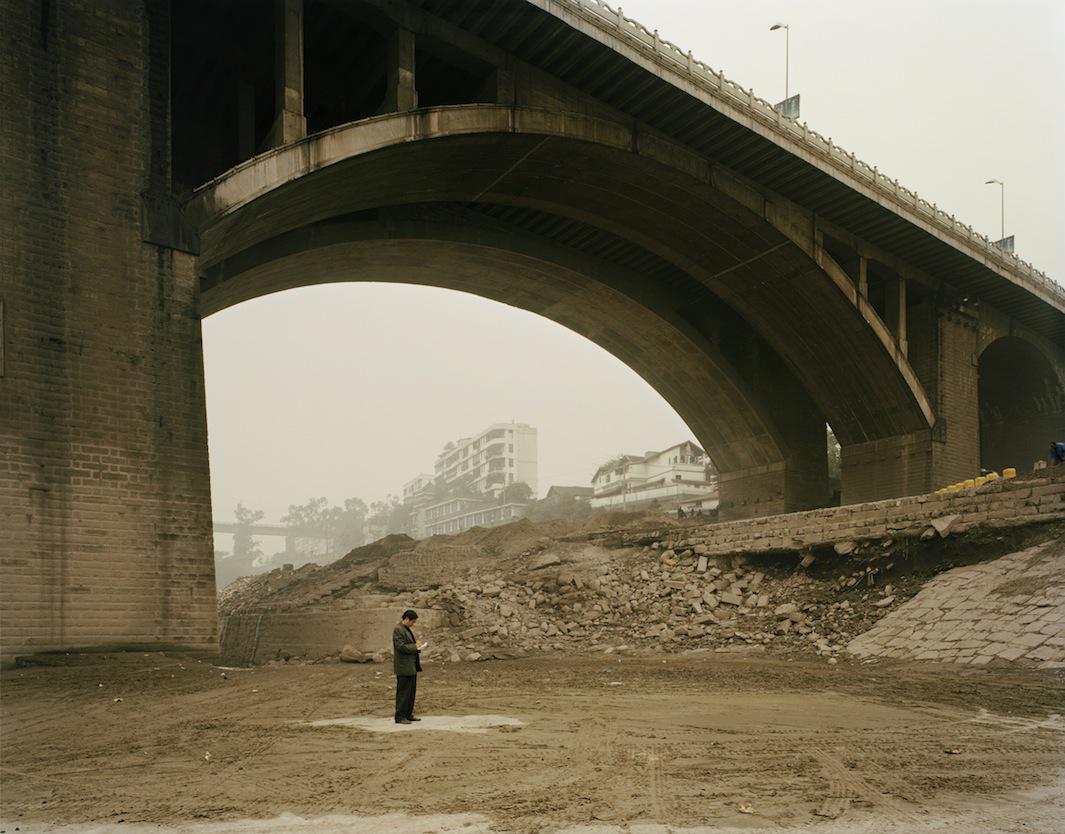
Nadav Kander

Nadav Kander

Nadav Kander
